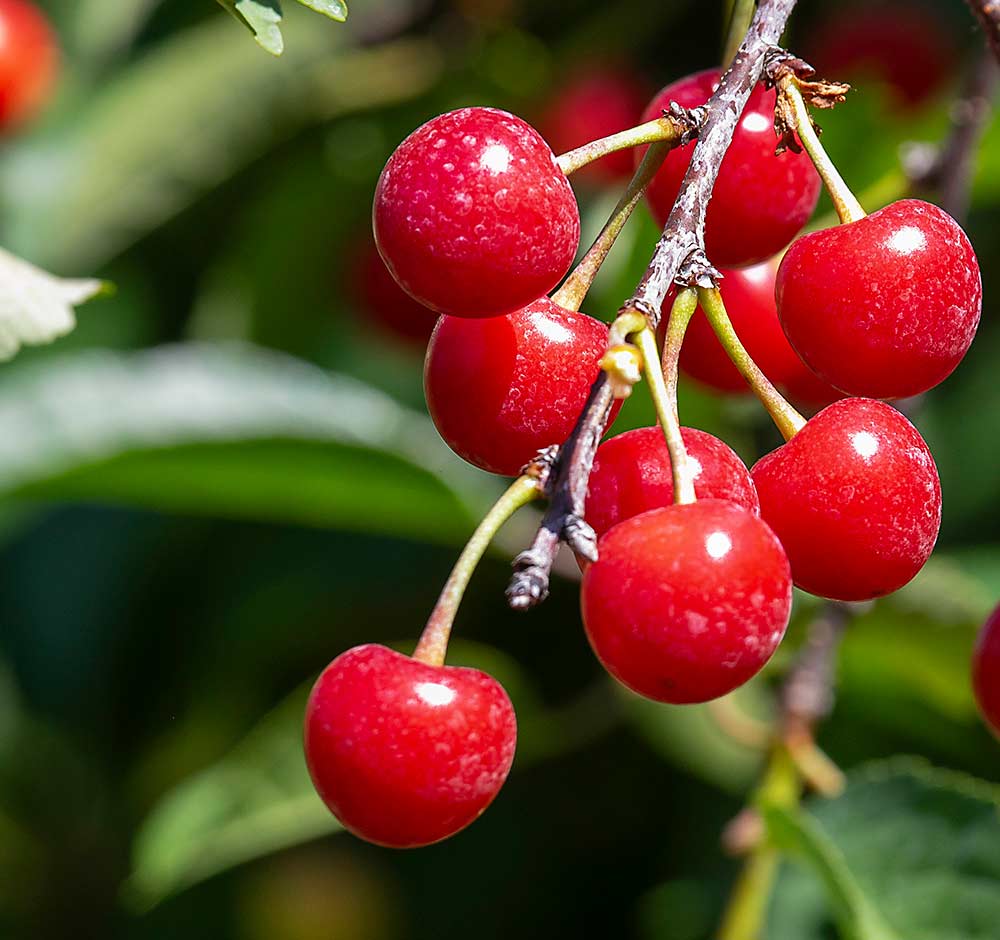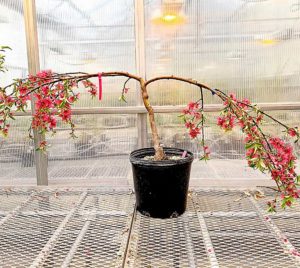—story by Matt Milkovich
—photo by TJ Mullinax

Michigan State University researchers recently created an annotated genome for Montmorency, the variety that dominates the U.S. tart cherry industry.
The breakthrough will help researchers and breeders find genes and markers associated with different traits much faster than in the past, said MSU assistant professor Courtney Hollender, whose lab spearheaded the generation of the annotated genome.
This genetic map will help breeders chart a path toward a better tart cherry, but there are more hurdles remaining on that quest.
When Hollender’s team announced the Montmorency genome in 2023, it was the result of about four years of work. Scientists had already cracked the sweet cherry genome, and Hollender’s team — which specializes in fruit tree genetics, development and physiology — wanted to map the Montmorency genome to speed up some of their research projects.
It wasn’t as easy as they first thought it would be. Led by Charity Goeckeritz, one of Hollender’s graduate students at the time, the team discovered that Prunus cerasus, the sour cherry species, has twice as many chromosomes as sweet cherry, Prunus avium, so mapping its genes was a more complex task, Hollender said.
Now, with this particular breeding obstacle overcome, it’s on to the next one: hiring a tart cherry breeder.
MSU horticulture professor Amy Iezzoni served for decades as the nation’s lone tart cherry breeder, until she retired in 2021. The industry has awaited a successor ever since, but MSU budget constraints have delayed action.
Hollender said that should change soon. MSU’s College of Agriculture and Natural Resources will advertise for a new breeder position in the near future, probably in 2025. The exact job description has not yet been solidified, but it will include tart cherry breeding, genetics and genomics. It might also include peach breeding.
MSU staff is still maintaining a subset of the germplasm collection Iezzoni built up. Extension specialist Nikki Rothwell said there were plans to plant elite tart cherry selections at MSU’s Northwest Michigan Horticulture Research Center this spring.
And from her home in Northwest Michigan, the heart of tart cherry country, Iezzoni is still patiently managing advanced cherry selections. She always meant to bridge the gap between herself and her successor, but the process is taking longer than she initially thought it would.
“I’m trying to make sure the selections with commercial potential are looked after,” Iezzoni said. “The good news is that things are happening.”
Once a new breeder is hired, the next step will be zeroing in on traits that improve upon Montmorency’s weaknesses. Michigan grower Dave Smeltzer listed the “big four” desired characteristics: later blooming, greater firmness, more uniform color and resistance to cherry leaf spot.
Montmorency has proven vulnerable to spring freezes, which have grown more frequent in Michigan in recent decades and have led to a few massive crop losses. That’s why the industry needs a later-blooming variety. Smeltzer said even one or two days “can make a world of difference.”
Montmorency also tends to turn soft and bruise easily, and it doesn’t always color consistently, making it less desirable to processors, he said.
Montmorency also is susceptible to cherry leaf spot, the Michigan industry’s biggest disease problem. Iezzoni said two of her advanced selections appear to be tolerant to the disease.
Even if a breeder comes up with a new and improved variety that can solve all of these problems, the next, and perhaps biggest, hurdle would remain. Smeltzer called it the million-dollar question: Can the industry afford to replace Montmorency?
Tart cherry growers have been so reliant on Montmorency for so long that replacing it won’t be easy, Utah grower Marc Rowley said. It’s not just the expense of new plantings for an industry that’s been struggling to make a profit. The industry has spent a lot of time and money marketing the health benefits of Montmorency, and virtually all of its growing and handling processes revolve around the variety. Any new variety would have to promise a big bump in yield and quality for growers to seriously consider replacing it.
“Even if we find hardier or later-blooming varieties, it’s not going to be an easy fix,” said Michigan grower Juliette King McAvoy. “They still would have to fit into a specific production and processing niche.”
But to survive in the long run, the U.S. tart cherry industry needs a better piece of fruit, Smeltzer said. •








Leave A Comment